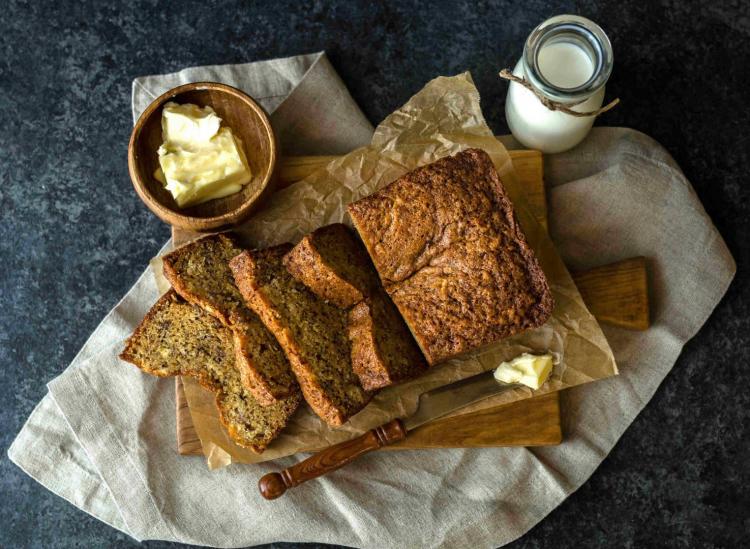12 Fun New Year’s Food Traditions From Around The Globe

Unsplash
Celebrating the new year can take on a completely different meaning depending on which part of the world you live in. Americans tend to go crazy on New Year’s Eve by drinking as much alcohol as possible while Japanese families gather around elaborate bento boxes and soba noodles as they decorate their houses with rice cakes for good luck. You’d be surprised by how much food traditions can vary. Here’s how different people fill their plates at New Year’s celebrations around the world.
1. Ireland
New Year’s Day in Ireland is also known as the Day of the Buttered Bread. They have a tradition that involves placing a piece of buttered bread outside the front door to symbolize an absence of hunger in the house for the year to come.
2. Sweden And Finland
In Finland and Sweden, rice pudding is served for all of the New Year’s celebrations with an almond hidden inside. It’s been said that whoever finds the almond is guaranteed a lucky new year. In some families, the lucky person even wins a prize.
3. Greece And Turkey
In Greek culture, the pomegranate is known as the fruit of fertility, death, rebirth and hope. In Turkey, the pomegranate represents good luck. The red color represents the human heart, life and fertility, the medicinal properties represent health, and the abundant amount of round seeds inside represent prosperity. If you’re in a Greek household for your New Year’s celebration, you’ll likely see pomegranate incorporated in some way.
4. Spain
When the clock strikes midnight, people throughout Spain rapidly eat 12 grapes for good luck. If you don’t eat 12 grapes, it’s said that you’ll start your new year off on the wrong foot.
5. Italy
Lentils are the main act for most New Year’s dinners in Italy. They’re usually served after midnight. With their coin-like shape, lentils represent luck and prosperity for Italians. You’ll see the lentils served with cotechino, a spicy pork sausage.
6. Denmark
When the clock strikes midnight in Denmark, Danish people often eat a marzipan ring cake. The marzipan cake, which is also called kransekage, is a shaped into rings that are decorated with icing and stacked on top of one another. The largest ring is at the bottom and smallest is at the top, forming a tall cone shape. The marzipan rings have a crispy outer crust and soft, moist inner core.
7. Korea
Tteokguk, or Korean rice cake soup, is a dish often eaten during a lot of Korean New Year’s celebrations. The soup is made with sliced rice cakes and beef broth among other ingredients. The white oval-shaped rice cakes symbolize a bright and prosperous new year.
8. Japan
Soba noodles (made of buckwheat) are one of the most common foods eaten during Japanese New Year’s festivities. Soba noodles are said to bring good fortune. Their thin, long shape symbolizes a long and healthy life. Because the noodles break pretty easily, it almost feels like you’re breaking away from the old year to start fresh.
9. Austria
Austrians serve roasted suckling pig on New Year’s Eve, which they call Sylvesterabend. Pigs represent progress and prosperity to Austrians as well as in other countries like Cuba, Hungary and Portugal. You’ll see little marzipan pigs scattered around the dinner table on New Year’s Eve as well.
10. France
Well, the French do it up when it comes to celebrating the new year. A classic French New Year’s Eve dinner includes foie gras, oysters, smoked salmon and champagne.
11. Germany
If you’re in Germany for New Year’s Eve, you’ll come across people chowing down on Berliners. A Berliner is a German pastry that resembles a donut but doesn’t have a hole in the middle. They’re made with a lot of milk, butter and eggs, and they’re filled with a plum butter and coated with a powdered sugar icing. You’ll also see Berliners stuffed with strawberry and cherry jam.
Sauerkraut is also eaten on New Year’s Eve in some parts of Germany, and it’s considered to be another lucky food.
12. Poland And Scandanavia
In Poland and Scandinavia, it’s believed that eating pickled herring right at the stroke of midnight will guarantee you a year of bounty. Herring are abundant throughout western Europe. The silvery color of herring also resembles the color of coins, which is seen as a good omen for future fortune.











